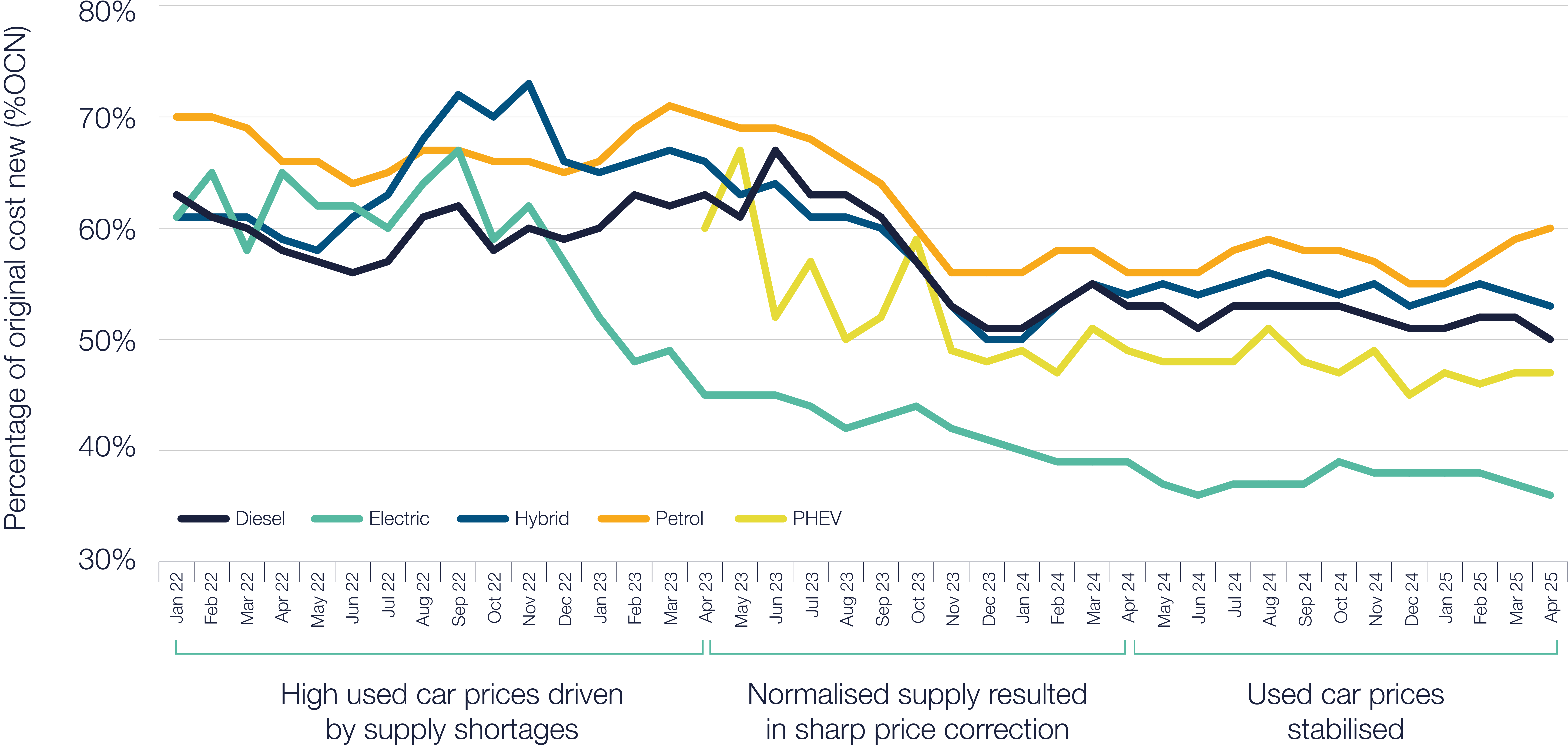IQ
Insight
Quarterly
Q1 | 2025
The used market: An anchor in choppy waters
New Cars
Used Cars
6 min read
While unrest and uncertainty shroud the automotive industry, the used market offers retailers stability amid this increasing volatility. These vehicles are a crucial source of profitability for many. As trade values continue to stabilise and consumer demand for lower-priced used vehicles remains consistent, confidence is increasing. With so much riding on the market, the strength and consistency of used operations have never been more critical.
Don’t let caution slow progress
The lingering effects of the pandemic and the accelerated transition towards electrification are compounding the challenges surrounding vehicle supply. Particularly hard hit have been vehicles between three and five years old due to Covid-19’s impact on car manufacturing. Autotrader forecasts a 37% decline in these cars by the end of 2025 compared to 2019.
Due to this volatility, many retailers are hesitant about adapting their stocking strategies. However, this approach risks leaving businesses exposed as the market continues to evolve. For instance, buyers are increasingly using multiple platforms to research, cost up, and buy their vehicles, so delivering a seamless omnichannel experience is vital. Retailers could miss opportunities to innovate if they are too focused on the supply challenge.
Looking ahead, some signals indicate that supply constraints may ease throughout the year. Towards the end of Q2 and the start of Q3, early indicators suggest that volumes entering the used wholesale market will begin to rise. While these volumes still fall short of pre-pandemic levels, an improved used car supply is a positive step for the market at this critical time.
Trade values continue to stabilise
A positive signal for the industry is the continued stabilisation of trade values. We now see values returning to more typical seasonal patterns, particularly for petrol and diesel models. This is a clear opportunity for retailers to set robust retail prices - where market conditions support them - and maximise their margins. Strategic stock selection and strong retail pricing will be crucial to sustaining profitability in a supply-constrained environment.
%OCN (Original Cost New) by Fuel Type (2-4 year old vehicles)

Source: Cox Automotive
Meanwhile, electric vehicles (EVs) continue to experience some volatility. The continued fluctuation of EV values is largely due to aggressive manufacturer discounts and an influx of new entrants to the market. We dive into used EV pricing dynamics in further detail in our electric market analysis.
Electric struggles amid a resilient commercial market
The commercial vehicle market remains resilient. Manheim Auction Services saw sold volumes increase by 21% year-on-year in Q1 and improvements across days to sell and first-time conversions, indicating strong market health.
Diesel continues to be the dominant fuel type, as operators prioritise reliability and range. While we have observed growth in electric vans across the wholesale market, with a 62.6% increase in electric van arrivals across Manheim sites in Q1, there are still roadblocks. Buyer confidence is lacking as infrastructure concerns and cost sensitivity have hindered performance, as these vehicles achieved 88% of guide values and only four in 10 vans selling first time. The commercial market is largely driven by buyers purchasing vehicles to fulfil orders, which leads to more selectivity from retailers compared to car dealerships.
Looking ahead
The used car market remained stable in March, as trade values held firm and outperformed seasonal expectations. Both petrol and hybrid models performed well, while EVs have faced some downward pressure. From here, the market is expected to expand steadily, supported by ongoing consumer demand and stable prices.
Closely monitoring evolving market dynamics will remain a crucial facet of successful retailing strategies, and a forensic approach to stock acquisition and pricing could make a significant difference to business performance in the next 12 months.
Used Vehicle Parc Forecast 2025 – 2028

Source: Cox Automotive






